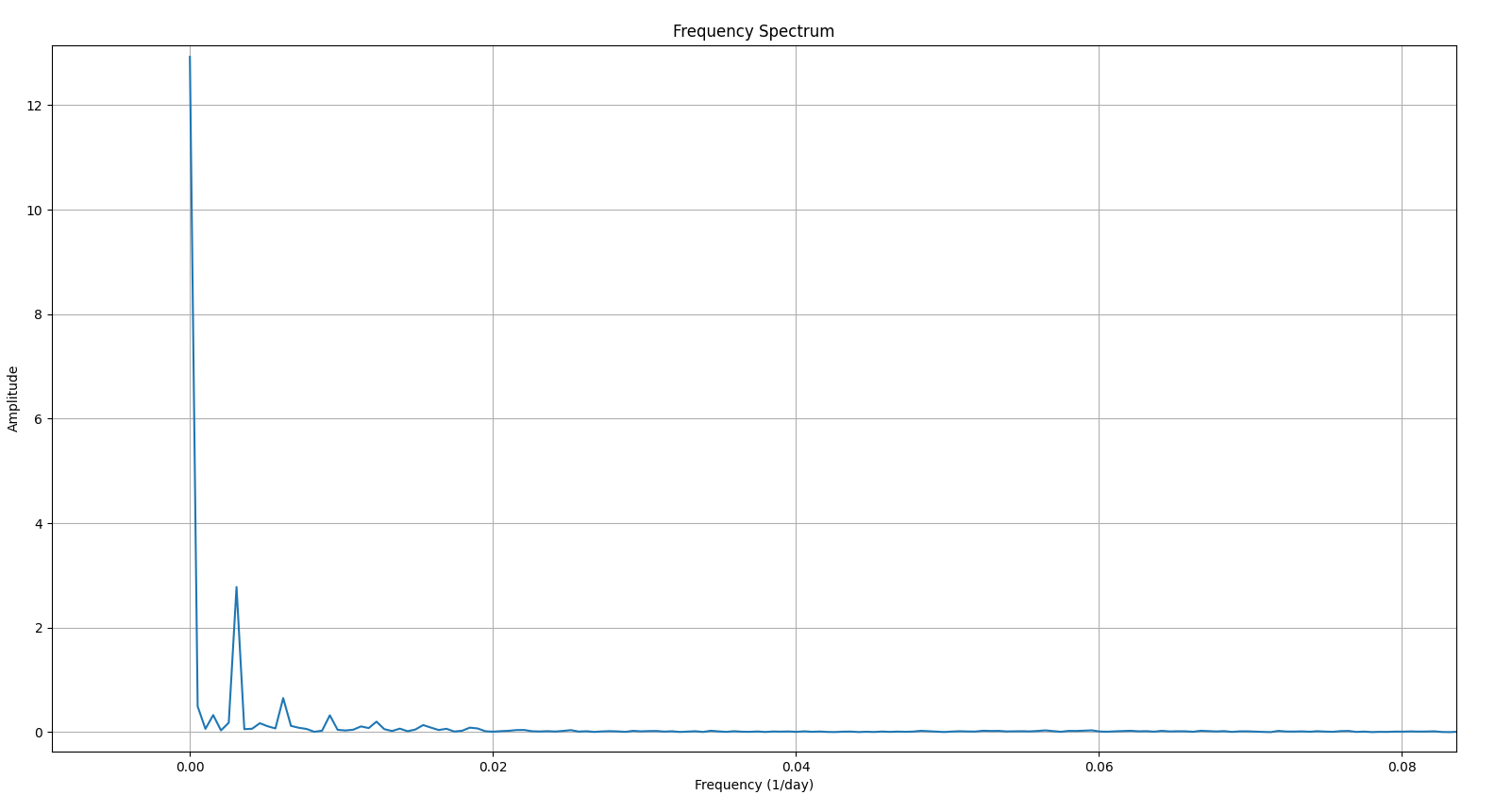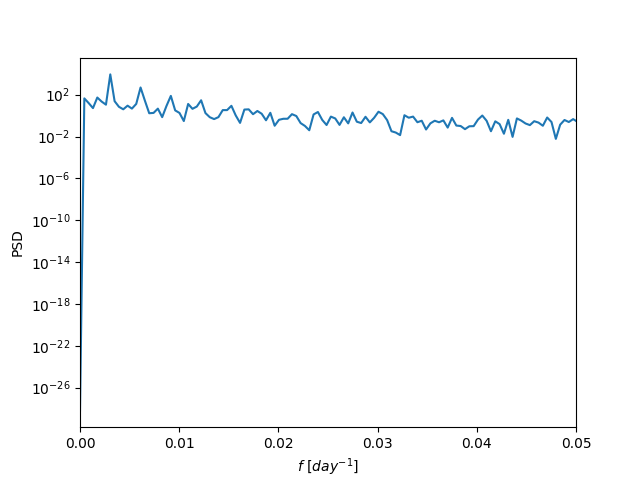作业六
组员:韦境量、阙佳
题目
合作项目,两人一组,数据自选,要求A同学前3/4数据,B同学后3/4数据,频谱分析,两人方法不同,并讨论
我们采用我在作业5 T1使用的数据 data_long.txt,这是变星 Mira(OMI CET) 从 2017 年 3 月 1 日到 2025 年 3 月 19 日的星等值数据。
前3/4部分
阙佳对数据的前3/4部分使用傅里叶变换 (FFT) 进行频谱分析,编写脚本如下:
py
import numpy as np
import matplotlib.pyplot as plt
from scipy.interpolate import interp1d
from scipy.fft import fft, fftfreq
# 读取文件的前3/4部分
file_path = "data_long.txt"
with open(file_path, 'r') as file:
lines = file.readlines()
# 计算前3/4部分的行数
num_lines = len(lines)
cutoff = int(num_lines * 3 / 4)
# 提取儒略日和星等值
julian_dates = []
magnitudes = []
for line in lines[:cutoff]:
jd, mag = map(float, line.strip().split(','))
julian_dates.append(jd)
magnitudes.append(mag)
julian_dates = np.array(julian_dates)
magnitudes = np.array(magnitudes)
# 创建等间隔的时间序列
uniform_time = np.linspace(julian_dates.min(), julian_dates.max(), len(julian_dates))
# 线性插值
interpolator = interp1d(julian_dates, magnitudes, kind='linear')
interpolated_magnitudes = interpolator(uniform_time)
# 计算傅里叶变换
N = len(uniform_time)
T = (uniform_time.max() - uniform_time.min()) / (N - 1) # 计算采样间隔
yf = fft(interpolated_magnitudes)
xf = fftfreq(N, T)[:N//2] # 频率
# 绘制频谱图
plt.figure(figsize=(10, 6))
plt.plot(xf, 2.0/N * np.abs(yf[:N//2]))
plt.title('Frequency Spectrum')
plt.xlabel('Frequency (1/day)')
plt.ylabel('Amplitude')
plt.grid()
plt.show()1
2
3
4
5
6
7
8
9
10
11
12
13
14
15
16
17
18
19
20
21
22
23
24
25
26
27
28
29
30
31
32
33
34
35
36
37
38
39
40
41
42
43
44
45
46
2
3
4
5
6
7
8
9
10
11
12
13
14
15
16
17
18
19
20
21
22
23
24
25
26
27
28
29
30
31
32
33
34
35
36
37
38
39
40
41
42
43
44
45
46
绘图结果如下: 
发现主要的频率及其幅度为:
| 频率 | 幅度 |
|---|---|
后3/4部分
我负责对数据的后3/4部分使用周期图法 (periodogram) 进行频谱分析,编写脚本如下:
py
import numpy as np
import matplotlib.pyplot as plt
from scipy import interpolate
from scipy.signal import periodogram
# read the last 3/4 data from data.txt
data = open('data_long.txt', 'r')
jds, mags = [], []
for line in data:
datas = line.split(',')
jd, mag = float(datas[0]), float(datas[1])
jds.append(jd)
mags.append(mag)
N = len(jds)
jds = jds[int(N / 4):]
mags = mags[int(N / 4):]
# linear interpolate
f = interpolate.interp1d(jds, mags, kind='linear')
N = len(jds)
t_new = np.linspace(jds[0], jds[-1], N)
mags_new = f(t_new)
# periodogram
fs = N / (jds[-1] - jds[0])
f1, Pxx1 = periodogram(mags_new, fs)
# draw the result
plt.semilogy(f1, Pxx1)
plt.xlabel(r'$f$ $[day^{-1}]$')
plt.ylabel('PSD')
plt.xlim(0, 0.05)
plt.show()1
2
3
4
5
6
7
8
9
10
11
12
13
14
15
16
17
18
19
20
21
22
23
24
25
26
27
28
29
30
31
32
33
2
3
4
5
6
7
8
9
10
11
12
13
14
15
16
17
18
19
20
21
22
23
24
25
26
27
28
29
30
31
32
33
绘图结果如下: 
可以看到除了直流部分,该变星的光变曲线的主频率为
讨论
对前3/4部分进行傅里叶变换得到的频率为